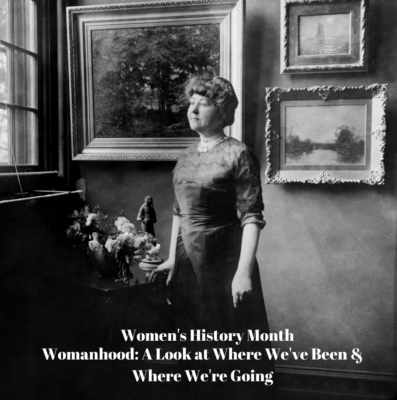In honor of women’s history month, it is important to look back at the pioneers, movements, and activism that laid the foundation for women in America today. By understanding women’s history, we can honor those who helped create the opportunities today and look to their example to better women’s future.
Foundation of Women’s Rights
The first meeting regarding women’s rights was held in 1848 at the Seneca Falls Convention. Here the Declaration of Sentiments and Resolutions was written by Elizabeth Cady Staton, echoing the Declaration of Independence by stating that men and women are created equal. Staton outlined how socially, legally, and economically, men held a tyranny over women. Additionally, she stated resolutions including the need for women to vote, to be involved in the creation of laws that affect women, to have the right to pursue education and careers, and to be able to speak and teach in religious assemblies.
Shortly after, Elizabeth Cady Staton met Susan B. Anthony and together focused their efforts by advocating at the state level for women’s suffrage. In 1890 they created the National American Woman Suffrage Association (NAWSA). This organization along with the support of Carrie Chapman Catt were successful in convincing many independent states to grant women the right to vote, starting with the Western states and slowly moving eastward. In 1917, Present Woodrow Wilson urged Congress to pass a voting rights amendment. In August of 1920, Tennessee was the thirty-sixth state that was needed to ratify the 19th amendment, therefore granting women the right to vote.
100 Years of Women
Since being granted the right to vote in 1920, there have been numerous milestones and achievements over the past 100 years to now:
- 1932 – Hattie Wyatt Caraway is the first woman elected to the U.S. Senate
- 1933 – Frances Perkins becomes the first female appointed to the U.S. cabinet
- 1955 – Rosa Parks refuses to give up her seat on a bus, helping launch the civil rights movement
- 1960 – The Food and Drug Administration approves the birth control pill
- 1963 – Equal Pay Act, promising equal wages for work regardless of race, religion, or sex is passed by congress
- 1964 – Civil Rights Act, banning employment discrimination based on race, religion, or sex is passed.
- 1972 – Education Amendments of 1972 prohibits discrimination in academic activities based on sex.
- 1973 – Supreme Court decision in Roe v. Wade makes abortion legal
- 1981 – Sandra Day O-Connor is the first woman to serve on the Supreme Court
- 1991 – Janet Reno becomes the first female attorney general.
- 1994 – Violence Against Women Act, providing funding for victims of domestic violence, rape, sexual, assault, and stalking.
- 1997 – Madeleine Albright becomes the first female appointed as secretary of state
- 2007 – Nancy Pelosi becomes the first female elected as the speaker of the House
- 2016 – Hilary Clinton becomes the first woman to receive the presidential nomination from a major political party.
Challenges Facing Women Today
When marveling at the many accomplishments of the women before us, there are challenges still present in American society today. Economically, the median earnings of women are just 81% of men’s, with the wage gap becoming more significant as earnings increase and even more so for minorities. Employment discrimination is still prevalent, with employers at times still hesitant or decidedly against hiring women who are mothers or pregnant.
Gender-based violence, including intimate partner violence, rape, sexual, assault, and stalking continues to be a disturbingly prevalent issue in American society today. Many of these crimes go unreported due to threats of further violence, risk of experiencing homelessness or financial hardship, stigma, retraumatization, and the lack of consequences. Often perpetrators are dismissed, acquitted, or receive shockingly low sentences for crimes against women. The objectification and sexualization of women in media, advertising, and society influence culture to perceive women as objects, less than human, and dependent on men, further perpetuating gender-based violence.
While there are more women in congress and lawmaking positions than ever before, there is still a long way to go for more equal representation. Men still create laws that directly affect women, including abortion, reproductive health, pregnancy, and birth control. Men hold the overwhelming majority of decision-making and high-level positions within academia and companies, and often undermine women’s ability to lead. When women are in leadership positions, they are able to create more equitable environments and offer diverse insights and ideas due to their experience.
Looking Ahead
By recognizing and honoring the women who used their lives to change society for the better, we can learn from the past to prepare for an even better future. Organizations like the National Organization for Women (NOW) and Women Impacting Public Policy (WIPP) continue the progress of women’s rights with advocacy, education, lobbying, and philanthropy. In addition to national organizations, local agencies and chapters can help to address specific barriers, struggles, and policies affecting women.
It is important also to address how systemic barriers and stereotypes affect the mental health of women. Organizations that offer gender-specific treatment can be effective for women to discuss and address how society impacts them, in a safe and non-judgmental environment.
In America, women are still fighting for representation in law-making and decision-making spaces, as well as social and economic equality. However internationally, many women are still without the right to education, career, appropriate healthcare, or social autonomy. As international activists like Malala Yousafzai and Tanzila Khan fight for women’s rights, we in America can offer support to ensure a world that is equal and safe for women everywhere.






